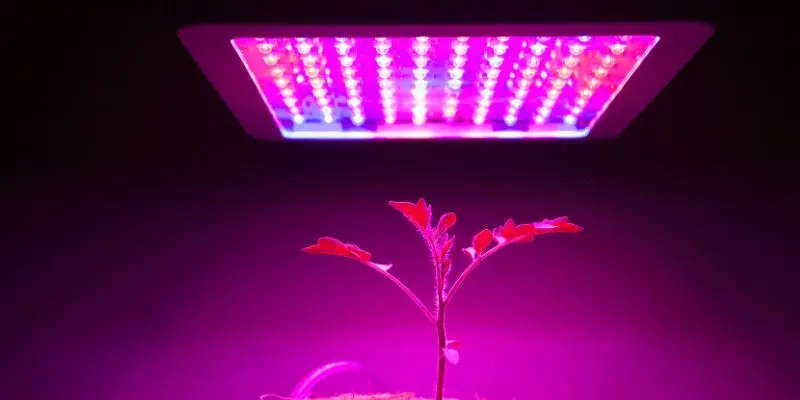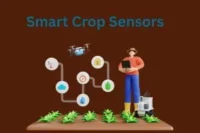LED Lighting Effects on Plant Growth: Shaping Tomorrow’s Gardens with Light
Published: 1 May 2025
As global demand for food grows and space becomes increasingly limited, LED lighting is emerging as a vital tool in modern agriculture. Research has demonstrated that specific light wavelengths—especially in the red and blue spectrum—directly influence photosynthesis, plant morphology, and overall yield. By mimicking or enhancing natural sunlight in indoor and vertical farming environments, LED technology is helping growers produce healthier, faster-growing crops with greater efficiency and sustainability than ever before.
So, guys, without wasting time, let’s jump into the article to learn LED Lighting Effects on Plant Growth: Shaping Tomorrow’s Gardens with Light
What Are LED Grow Lights?
- LED (Light Emitting Diode) lights are energy-efficient lighting systems designed to emit specific light wavelengths that support plant development.
- Unlike traditional lights, LEDs can be fine-tuned to provide exact spectral needs of different plants at different stages.
- Common types include:
- Full-spectrum LEDs: Mimic natural sunlight
- Red/Blue LEDs: Promote photosynthesis and flowering
- White LEDs: Balance of color for general growth

Why Light Matters to Plants
- Plants don’t just need light—they need the right kind of light.
- Light triggers photosynthesis, the process by which plants convert light into energy.
- The quality (wavelength), intensity, and duration of light all impact:
- Germination
- Leaf and root development
- Flowering and fruiting
- Color and nutrient density
Emotional Impact: Growing Hope Indoors
- For urban dwellers with no access to land, LEDs bring gardening to kitchens and balconies.
- For farmers in harsh climates or polluted cities, LEDs offer control and reliability.
- For schoolchildren learning to grow food indoors, these lights turn science into something living and magical.
- LEDs make growing food possible where sunlight cannot reach—and that changes lives.
Key Benefits of LED Lighting for Plant Growth
1. Optimized Photosynthesis
- Specific red (660 nm) and blue (450 nm) wavelengths directly fuel plant energy production.
- Faster growth and stronger stems, even in low-light environments.
2. Energy Efficiency
- LEDs use up to 80% less energy than traditional grow lights.
- Long lifespan (25,000–50,000 hours) means lower replacement and maintenance costs.
3. Space-Saving & Indoor Farming
- Enables vertical farming, hydroponics, and home gardening.
- No need for direct sunlight—perfect for apartments, greenhouses, or underground farms.
4. Customizable Light Spectrum
- Growers can adjust light color and intensity for each plant type or growth stage.
- Helps improve flowering, fruiting, and even flavor and nutrient density.
5. Low Heat Emission
- Unlike fluorescent or incandescent lights, LEDs produce minimal heat.
- Reduces risk of burning plants and keeps the growing environment stable.

Scientific Backing & Case Studies
- NASA has used LED lighting for plant growth experiments in space, proving plants can thrive under artificial light (NASA, 2017).
- A 2020 study in Horticultural Science found lettuce grown under red-blue LEDs had faster growth and higher nutrient content than under natural light.
- Urban farms in cities like Tokyo, London, and New York are already using LED-based vertical farms to grow crops with 98% less water and no pesticides.
Challenges of Using LED Lighting in Agriculture
1. High Initial Cost
- Advanced LED systems can be expensive for small-scale growers.
- However, energy savings and lifespan often offset the upfront cost over time.
2. Technical Knowledge Needed
- Users must understand how to program spectra and control lighting schedules.
- Improper settings can stunt growth or cause plant stress.
3. Limited Reach for Outdoor Farmers
- LED systems are most practical for controlled environments like greenhouses or indoor farms.
- Outdoor farms still rely on natural sunlight, limiting widespread adoption.
Solutions and Future Innovations
- Development of smart LED systems with app-based controls and AI recommendations.
- Affordable grow light kits for home gardeners and school programs.
- Integration with solar energy systems for off-grid use.
- Advances in spectral tuning for specific crops like strawberries, tomatoes, cannabis, and microgreens.
Emotional and Cultural Shift
- Growing with LEDs isn’t just about farming—it’s about freedom and access.
- Elderly people growing herbs in retirement homes.
- Students learning biology through real plants, not textbooks.
- Refugee camps and remote villages growing fresh greens without land or sun.
References
Research by NASA (2017) confirms that tailored LED light spectra can support full plant development in space, proving their effectiveness in controlled, soil-free environments.
Author Name
Darren Chi Jinn Neo
Shaping and Tuning Lighting Conditions in Controlled Environment Agriculture: A Review
Click to copy article link

- Be Respectful
- Stay Relevant
- Stay Positive
- True Feedback
- Encourage Discussion
- Avoid Spamming
- No Fake News
- Don't Copy-Paste
- No Personal Attacks

- Be Respectful
- Stay Relevant
- Stay Positive
- True Feedback
- Encourage Discussion
- Avoid Spamming
- No Fake News
- Don't Copy-Paste
- No Personal Attacks





